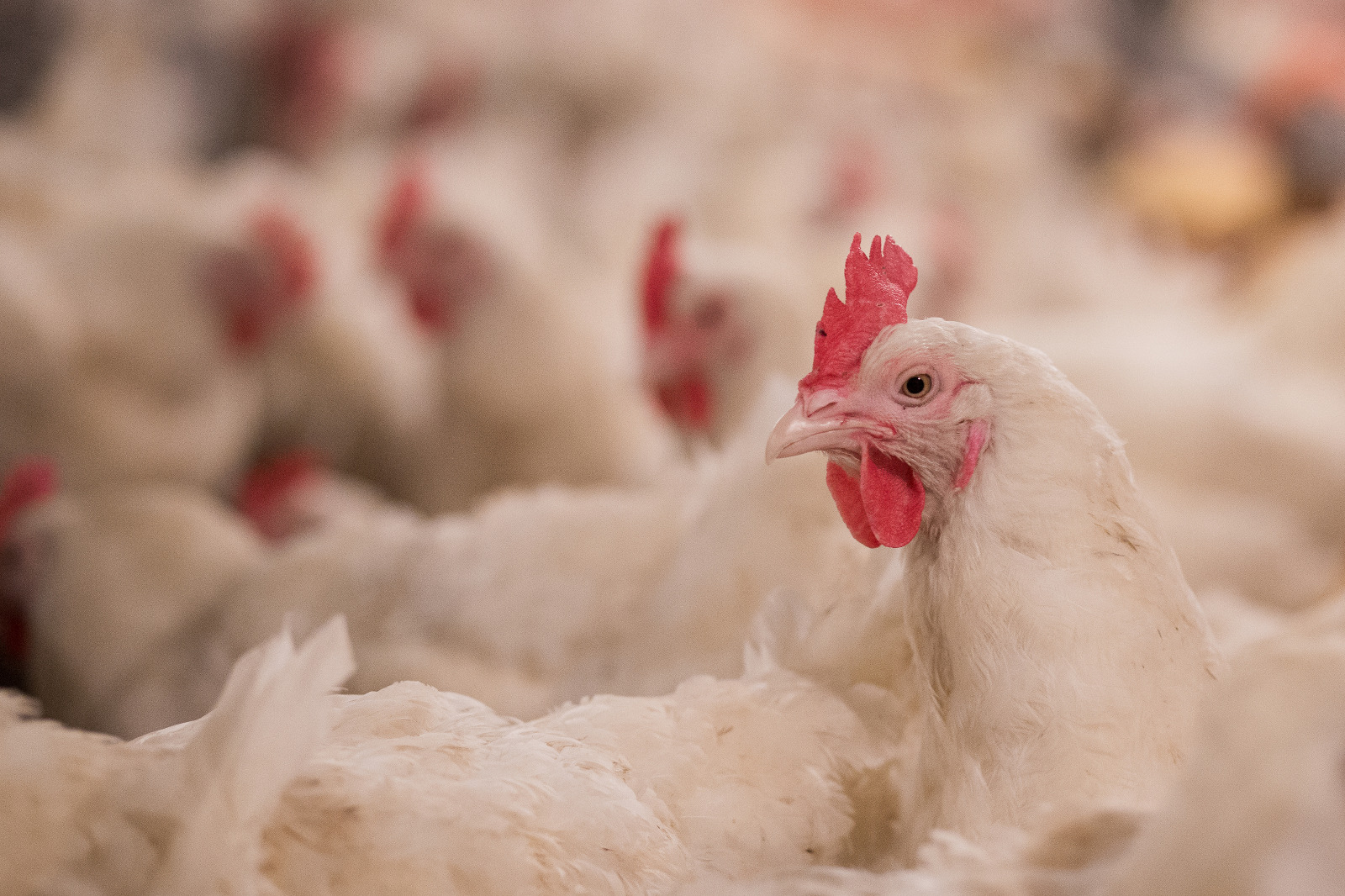Avian influenza (fowl plague)
Avian influenza (fowl plague)
Occurrence: Worldwide.
Species affected: All.
Age affected: All.
Causes: Type A Orthomyxoviruses.
Effects: Reportable disease. Respiratory distress, coughing, sneezing, rales, depression, sinusitis, emaciation, feed refusal, nervous signs and diarrhea. In layers, there is a drop in egg production and shell quality. Mortality is rapid with virulent strains.

- Table of contents
- Clinical signs
- Postmortem lesions
- Diagnosis
- Treatment & control
- Articles on avian influenza
Clinical signs
The incubation period is hours to days, depending on age, sex, species affected, concurrent infections and pathogenicity of virus. Respiratory distress, coughing, sneezing, rales, depression, sinusitis, emaciation, off feed, nervous disorder, and diarrhoea may be seen. Rapid mortality, up to 100%, occurs with virulent high pathogenic strains (fowl plague) (H5 and H7 subtypes). Multiple pathotypes can occur. Low pathogenic strains causing only a mild respiratory disease, but their presence in flocks can lead to trade restrictions among countries. A drop in egg production and shell quality, watery eyes, excessive lacrimation, oedema of head and face, and cyanosis may be observed.
Postmortem lesions
Lesions include mucous in trachea, air sacculitis, swollen head or wattles, egg peritonitis, sinusitis, watery lungs, and fibrinous enteritis. Pericarditis, necrosis of skin and GI tract; haemorrhages on wattles, combs and legs; necrotic foci on liver, spleen, kidney and lungs, and haemorrhages at junction of proventriculus and gizzard can be seen with fowl plaque.
Diagnosis
The AGP and ELISA tests can be used for determining the presence of antibody in the sera. Isolation and identification of virus from trachea or vent in embryonating eggs or tissue culture is needed. Test haemagglutinating ability of the virus mixed with chicken sera containing antibodies against influenza. The virus can be sub-typed using specific sera against all known HA and N or new real time PCR tests using subtype specific probes can make a diagnosis in 2 hours. It simulates mycoplasmosis, turkey coryza, VVND, ILT, ornithosis, and fowl chlorea.
Treatment & control
Prevention
Killed vaccine is available some countries. Quarantine, depopulation and eradication of virulent form is mandated under law in most countries. Strict biosecurity is needed. Control of live bird markets in important to prevent the spread of the virus. Wild free flying waterfowl can spread AIVs all over the world. Recombinant AI vaccines available, which contain the H5 gene cloned into fowl pox, NDV, or HVT vectors. The H5N1 highly pathogenic viruses can jump species causing disease in several them including humans. H7 viruses have also been shown to cause disease in humans.
Treatment
Broad-spectrum antibiotics are helpful to control secondary bacteria.